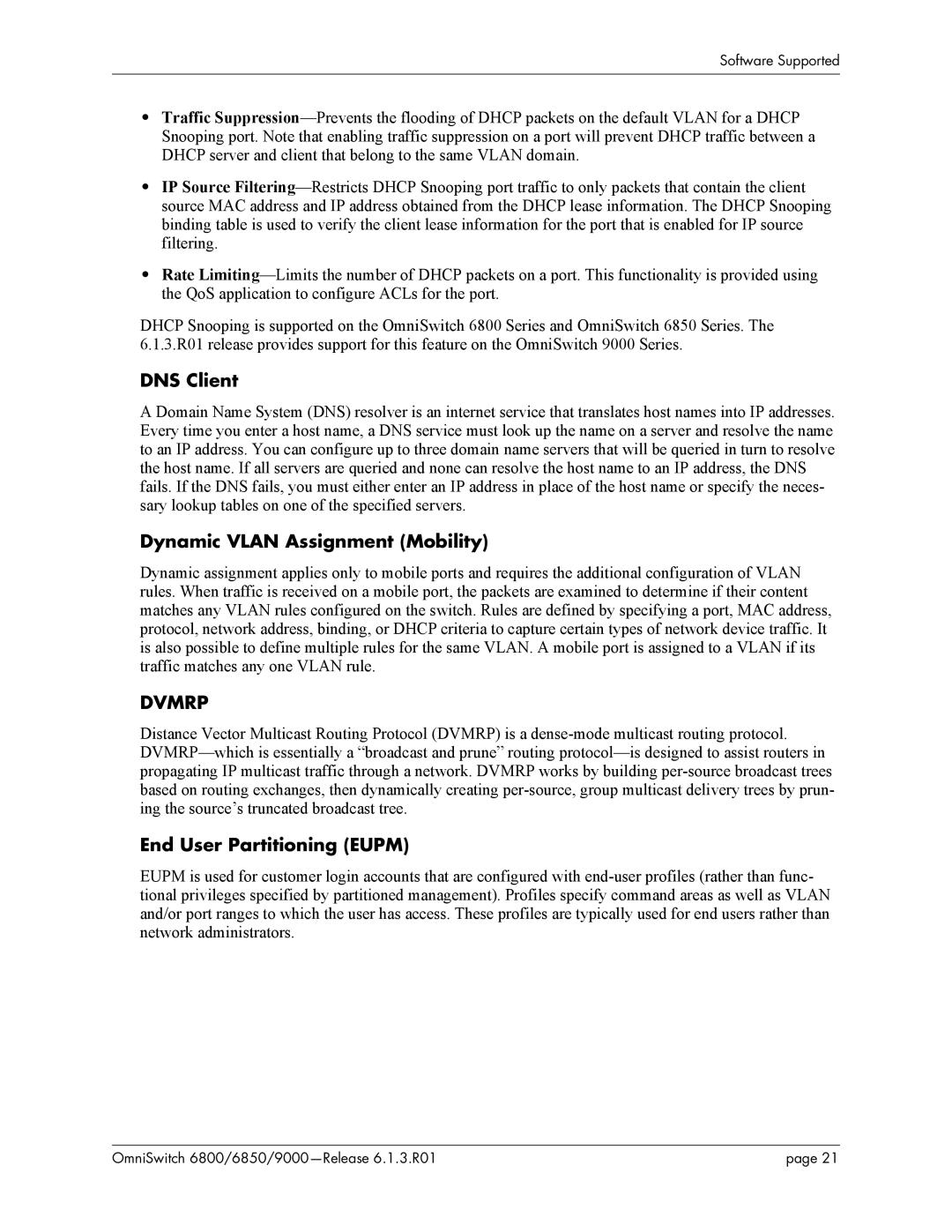
Software Supported
•Traffic
•IP Source
•Rate
DHCP Snooping is supported on the OmniSwitch 6800 Series and OmniSwitch 6850 Series. The 6.1.3.R01 release provides support for this feature on the OmniSwitch 9000 Series.
DNS Client
A Domain Name System (DNS) resolver is an internet service that translates host names into IP addresses. Every time you enter a host name, a DNS service must look up the name on a server and resolve the name to an IP address. You can configure up to three domain name servers that will be queried in turn to resolve the host name. If all servers are queried and none can resolve the host name to an IP address, the DNS fails. If the DNS fails, you must either enter an IP address in place of the host name or specify the neces- sary lookup tables on one of the specified servers.
Dynamic VLAN Assignment (Mobility)
Dynamic assignment applies only to mobile ports and requires the additional configuration of VLAN rules. When traffic is received on a mobile port, the packets are examined to determine if their content matches any VLAN rules configured on the switch. Rules are defined by specifying a port, MAC address, protocol, network address, binding, or DHCP criteria to capture certain types of network device traffic. It is also possible to define multiple rules for the same VLAN. A mobile port is assigned to a VLAN if its traffic matches any one VLAN rule.
DVMRP
Distance Vector Multicast Routing Protocol (DVMRP) is a
End User Partitioning (EUPM)
EUPM is used for customer login accounts that are configured with
OmniSwitch | page 21 |
